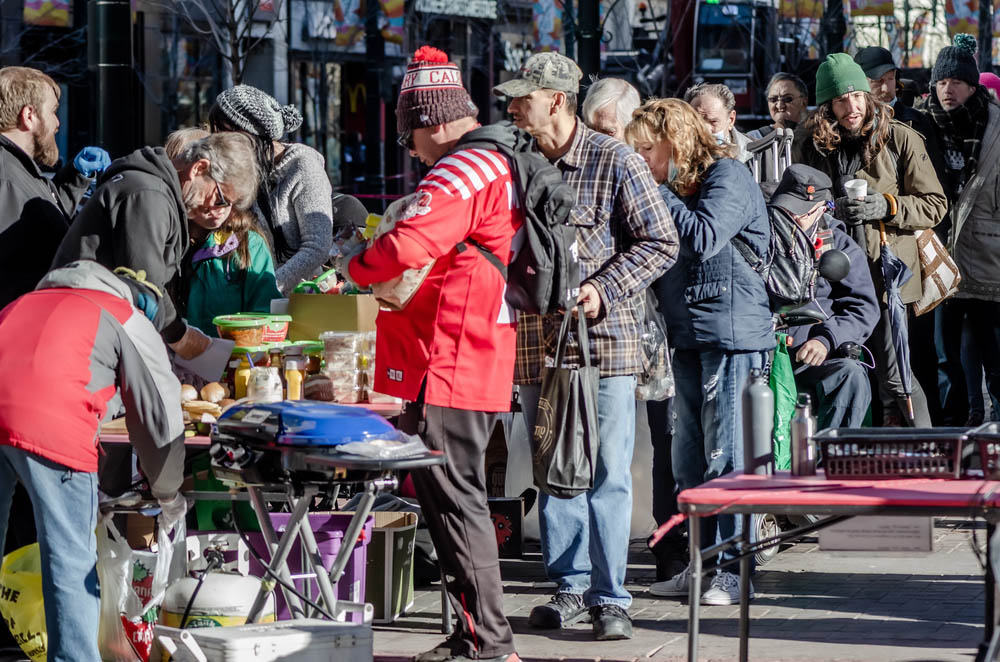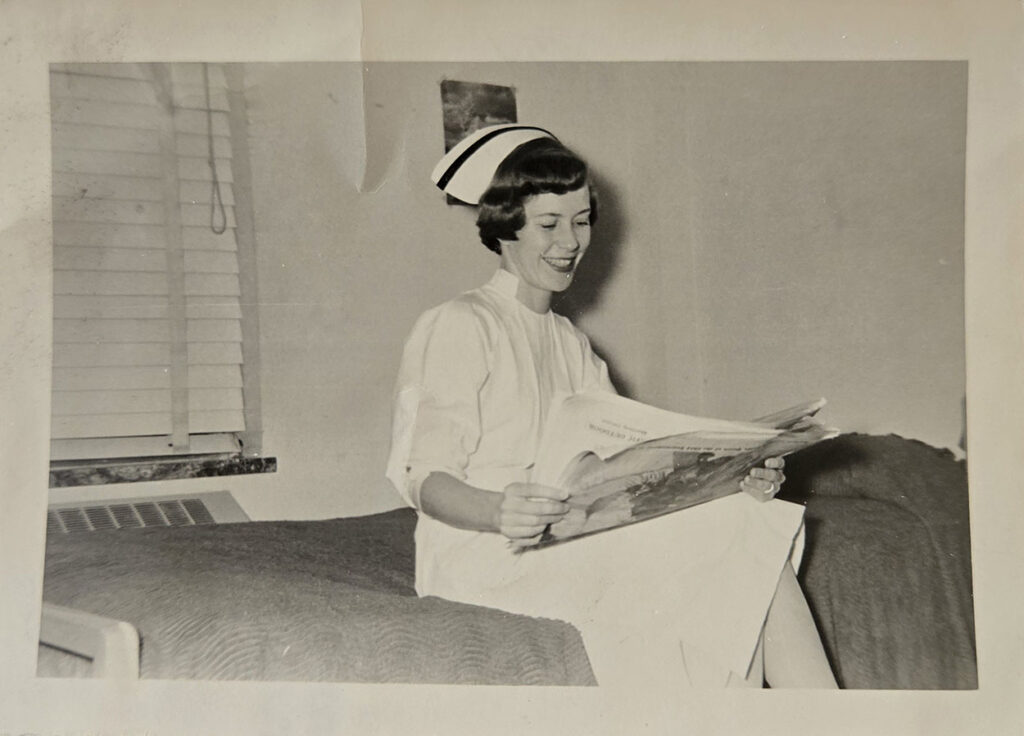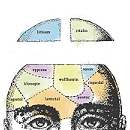You may not know any of what’s unfolding in this country because you don’t have to. Your life doesn’t depend on it. Your survival doesn’t depend on it. You won’t not thrive because you don’t know it. You won’t be marginalized or othered because you don’t know it. You’ll never be taken away or see those you love taken away. You won’t see the past repeating itself in the form of an old bigotry with a new face.
You may see Fox News host Brian Kilmeade state, on the station’s flagship program, that those with mental-health issues and who are unhoused should be subject to “involuntary lethal injection or something,” followed by the statement: “Just kill them.” You might think, “huh.” You might make a joke about it, anything to diminish its significance. You might not think twice as you go on with your day.
You probably won’t connect Kilmeade’s comment to the July 24 Executive Order Donald Trump signed this year. The order, formally called “Ending Crime and Disorder on America’s Streets,” makes sweeping changes to the way people who are unhoused, live with mental-health diagnostic labels, and live with substance abuse issues are treated. It eliminates or curtails people’s rights and liberties, criminalizes these groups, allows folks to be institutionalized indefinitely without due process and establishes a registry for those with mental-health issues who receive services funded at the federal level. I’ve written elsewhere that this order is as close to an extermination order as we’ve come in this country since 1942, when Executive order 9066 led to the incarceration of Japanese Americans during World War 2. It also has features in common with Missouri Executive Order 44, which literally called for the removal or extermination of all Mormons from the state of Missouri.
You might not realize Kilmeade’s comment is situated within this larger context, one in which the leader of the United States seeks to not only return us to the era of mass institutionalization that led to abuses across the country, but worse, because this time, if there’s no room in psychiatric units and hospitals, which there won’t be, folks can literally go straight to jail or what passes for jail these days. By that I mean detention centers that, again, look and feel a lot like internment camps straight out of the Second World War.

Kilmeade’s words matter, a lot, because of the mound he’s standing on, not to be confused with a mount. His is no sermon, his words offer no solace. He’s standing on a heap of biases and bigotry that are fomenting beneath us and all around us, ones that have now been codified by the President, which gives people like Kilmeade and so many others like him the power and privilege to say what he said, and to be protected while doing so.
You also may not realize “homeless” is a code word for “mentally ill.” That’s intentional. It further obfuscates the July 24 Executive Order’s intention. We may still have a modicum of compassion for those living with mental-health diagnostic labels and lived experience, but the President and those around him are banking on us more readily dismissing and literally discarding those who are unhoused. Why do I say homeless and mentally ill are synonymous? The issue goes back to John F. Kennedy dumping people out of state hospitals overnight, almost literally, without funding and without a plan for community mental health with the signing of the Community Mental Health Act on October 31, 1963. The first community mental-health center in the country, the one my mother helped open in Norman, Oklahoma, in 1967, was one of the only ones (if not the only one) in operation when that cataclysmic shift from hospitalization to community care began. It had 32 beds. That’s 32 as opposed to the 2,000 beds the hospital had at the time.
The folks who were driven out of the state hospital ended up in what were known in Norman, Oklahoma, and later across the state, as room and boards. There wasn’t anything in those places other than a room and a meal. The state of Oklahoma had to scramble to create community mental-health centers everywhere to help the folks Kennedy sent on their way. This infrastructure, and the funding needed to support it, was not in place when the mandate to close state hospitals was issued. The whole point of closing them was that Kennedy didn’t want to support these hospitals. It was getting too costly. Even inadequate funding was too expensive in a country increasingly hellbent on funneling funds to war and the tools of war.
The effect of approaching deinstitutionalization in this manner is that alcohol and drug use rose dramatically. Folks who couldn’t get community care self-medicated. Folks who’d had community no longer had community. They were isolated, which also leads to drug and alcohol use. Folks who had structure no longer had structure, which in turn … you get the idea … leads to drug and alcohol use. And drugs and alcohol were simply there. It’s as simple as that. They were readily available for folks living with great pain, great loss, and the effects of stigma and marginalization on top of their mental-health diagnostic labels and lived experience, including trauma. By trauma, I mean abuse. By abuse, I mean abuses. By abuses, I mean before the hospital, but also in the hospital, and now, also, after the hospital.
The next time you see someone who is unhoused and dealing with mental-health issues, think about that history and have some compassion as opposed to callousness and cruelty. Mental-health care has never been adequately funded in this country. Over time, our administrations have created and continue to perpetuate the very issues with drugs and alcohol, as well as lack of access to mental and physical healthcare, that keep people struggling to survive.
We should not be killed for that. We should not die for that. We should not be shunned for that. We should not be othered for that. We should not be shamed for that. We should not be erased for that. We should not be executive ordered out of existence for that. We should not be sidelined in our communities for that. We should not be blamed for that.
We are not the problem: its root or its source. We also shouldn’t have to bear the burden of bringing these matters to light or raising consciousness among those who aren’t affected by these developments the way we are. But we will because we have to. By we I don’t mean everyone with a mental-health diagnostic label or lived experience, or our true allies. But I mean more than me. I do mean a collective, a body, a shared voice with a shared purpose that finds itself, again, begging those around us to wake up to the horrors of the world, even if they don’t directly affect you.
I’m not arguing for mass hospitalization, to be clear. State hospitals have horrific histories, some of which I’ve seen firsthand because, as a child, I visited my mother where she worked on a locked ward at the state psychiatric hospital. (She’d decided to continue working at that hospital after she helped open the community health center.) The hospital itself was still in operation in a limited form, down to a few hundred patients after its height of 6,000 patients. My mother worked with women patients who were considered the most dangerous in the system. I saw rooms with solid metal doors that had only a mail-slot-sized opening, one that rarely opened unless food was being served or medication was being administered. I saw Corinthian-inspired balcony columns wrapped in steel wire with small, locked doors on the front. They were the size of a dog door and, I assume, were meant to allow staff to scale a ladder and enter from the outside of each balcony in an emergency. I saw what was the next iteration of the back ward in that hospital, where the “dangerous” women were, just a few years earlier, kept in wooden stables like animals and hosed down over grates, as documented by a local journalist.
I am saying that a better plan needed to be in place for deinstitutionalization, and that didn’t happen. Just as Kennedy didn’t like how psychiatric hospitals made the country look—ones like the one his family sent his sister Rosemary to—Trump doesn’t like the look of unhoused people, again code for folks with mental-health diagnostic labels and lived experience, being in “his” cities and on “his” streets and in “his” country. Trump’s executive order, which calls for the long-term commitment of people with mental-health issues, those who have substance-abuse issues, and those who are unhoused—three categories he addresses separately, meaning anyone in any one of those categories is at risk—is an unwinding of Kennedy’s deinstitutionalization that’s just as disastrous as what Kennedy did and will only compound the myriad forms of suffering those of us with mental-health issues have already experienced, survived, or not survived.
Don’t believe me? Ask my mother. She not only worked in a state psychiatric hospital from the mid-century until her retirement in the 1990s, thereby seeing psychiatric care and what passes for care through all its iterations, she also lived with bipolar and severe trauma/abuse, so she was on the receiving end of life-threatening and life-altering treatments, as well as knowing how deep, how very deep, the stigma about mental-health issues goes and how quickly situations can turn dangerous, even deadly, for those of us with lived experience. I wish she were alive so she could help convince you why you need to pay attention to these issues even if you don’t think they’re relevant. I’m doing my best to channel her knowledge, experience, and wisdom as I make this plea.

What I describe in this essay is privilege, neurotypical privilege in particular. You probably have it if you aren’t aware of the events I’ve described or the history of psychiatric care in this country. Peggy McIntosh wrote a famous essay in 1993 titled “White Privilege: Unpacking the Invisible Knapsack,” in which she unpacks white privilege in a 44-point list. Reading that list is immersive and experiential in ways that are profound, but only if you’re open to stepping into someone else’s life and life experience rather than getting defensive or emotionally bypassing what’s being described and shared. If you have privilege, that’s not a bad thing, but it is a reason to think more, learn more, and consider more about those things you aren’t forced because of your own life experiences and circumstances to think about, learn about, and consider. That’s what I’m saying in this open letter to my friends to everyone who reads this piece.
Think more about us rather than moving away from us and our stories in favor of something more mindless or easier to digest.
Learn more about us, including our present struggles and attacks on our human rights. Learn about our history and the history of psychiatric treatment in this country. It’s your history, too, because history is something that informs all of us and that all of us share. You don’t have to go to war for war to be part of your history. You didn’t have to be alive on Independence Day to celebrate the holiday and what it stands for. You don’t have to have a mental-health diagnostic label or lived experience for the treatment of those with mental-health diagnostic labels and lived experience to be part of your history.
And finally: Consider us. Just consider us when you speak to us and about us, when you think about what we are and aren’t. Consider your language. Consider your assumptions. Consider your silence. Consider the ways in which you may be complicit or complaint or just plain ignorant but don’t have to be.
****
Sources: Personal experience as a visitor at Central State Hospital aka Griffin Memorial Hospital in Norman, Oklahoma, in the 1970s when parts of the hospital were still open; personal interviews with my mother, who worked at the hospital for 35 years and helped open the community mental-health center; interview with a health aide who worked at the hospital for decades; and comments from the health aide that appear in a University of Oklahoma student thesis on the subject of the hospital and its history.











